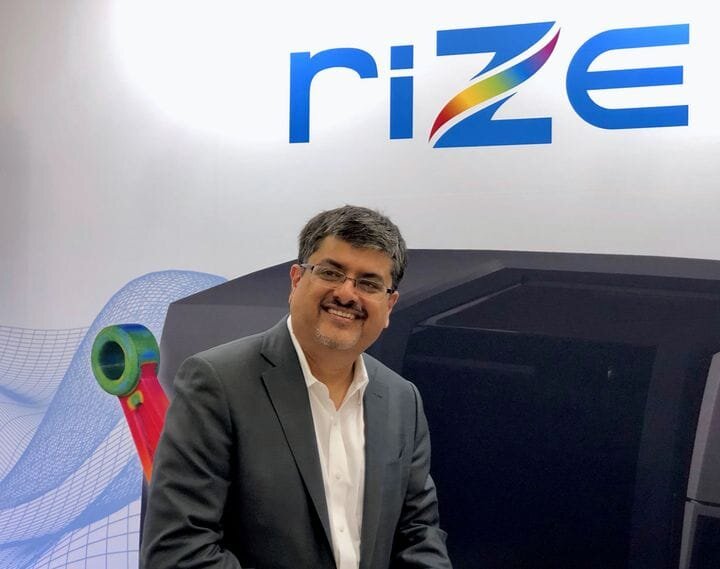![Rize CEO Andy Kalambi with the now-shipping XRIZE 3D printer [Source: Fabbaloo]](https://fabbaloo.com/wp-content/uploads/2020/05/image-asset_img_5eb08cfc31689.jpg)
Rize announced they are now shipping their powerful XRIZE system.
I presume they’ve been shipping the machine to test sites for some time, obviously but the news is that the device is now “commercially available”, which I take to mean anyone can now order and receive a unit.
They say:
“RIZE, Inc., a Boston, USA-based, next-generation additive manufacturing company … announced today that it has begun commercial shipments of its XRIZE industrial 3D printer. Purpose-built for an office or field environment, XRIZE empower users throughout the enterprise to accelerate innovation, compress time to market and reduce part costs.”
The timing of this announcement seems to be almost exactly a year since Rize announced the XRIZE system.
XRIZE 3D Printing Process
I’m quite interested in this machine as it uses a unique process among 3D printers that is highly flexible and actually able to do even more than the XRIZE can achieve. The XRIZE also 3D prints in perhaps the safest manner I’ve seen from the major vendors due to an innovative approach to chemistry: the XRIZE can 3D print with literally zero emissions, unlike almost every other type of 3D printer.
If you’re not familiar with their process, it is a combination of filament extrusion and liquid inkjet technologies. Here’s how it works.
The filament is extruded in the usual manner, but at each layer there is the possibility for a sweep by a set of inkjet nozzles of high resolution. Their current inkjet system includes the capacity for as many as six different inks.
XRIZE Color System
These inks are what make the difference in the system. One of the inks is an adhesion-inhibiting material. When deposited on a layer, it prevents the subsequent layer from fusing. Normally, this is highly undesirable, but Rize’s software uses this effect to physically separate model material from support structures. In this way the support material can literally be pulled off by hand in seconds from almost any 3D print. Ingenious!
The XRIZE system also includes a set of color inks. This allows precision deposition of RGB colors at the pixel level on any layer of a 3D print. Thus it would be possible to, for example, embed a colored insignia or label on a part that would not wear off: the colors could be deposited deep into the material if required. You could also 3D print complex textures across an irregular surface, including images, if your 3D CAD software allows you to create such a 3D model.
3D Printed Part Tracking
One of the key use cases Rize has identified for this technology is part tracking. Because each 3D print can potentially be unique, it is trivial to generate and embed serial numbers, model information, version ids or other tracking data physically into a 3D printed part. For engineers prototyping an iterative sequence of parts, this could be a life-saving feature.
There are yet more possibilities for this 3D printing process that XRIZE has not yet publicly explored. I suspect they may be considering, for example, an ink that is conductive. This might allow a future XRIZE system to 3D print objects with electrical circuits embedded within the structure.
I’m closely following developments at Rize to see what they come up with next. Meanwhile, it is now possible for anyone to acquire an XRIZE 3D printer.
Via BusinessWire

